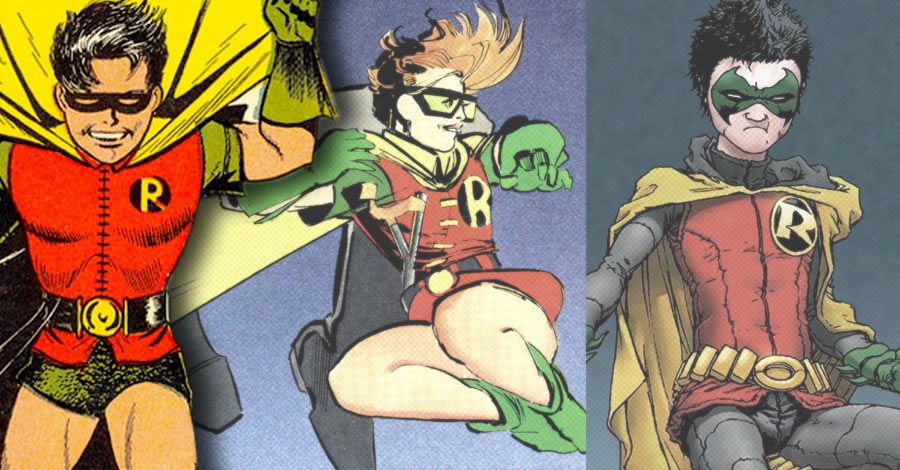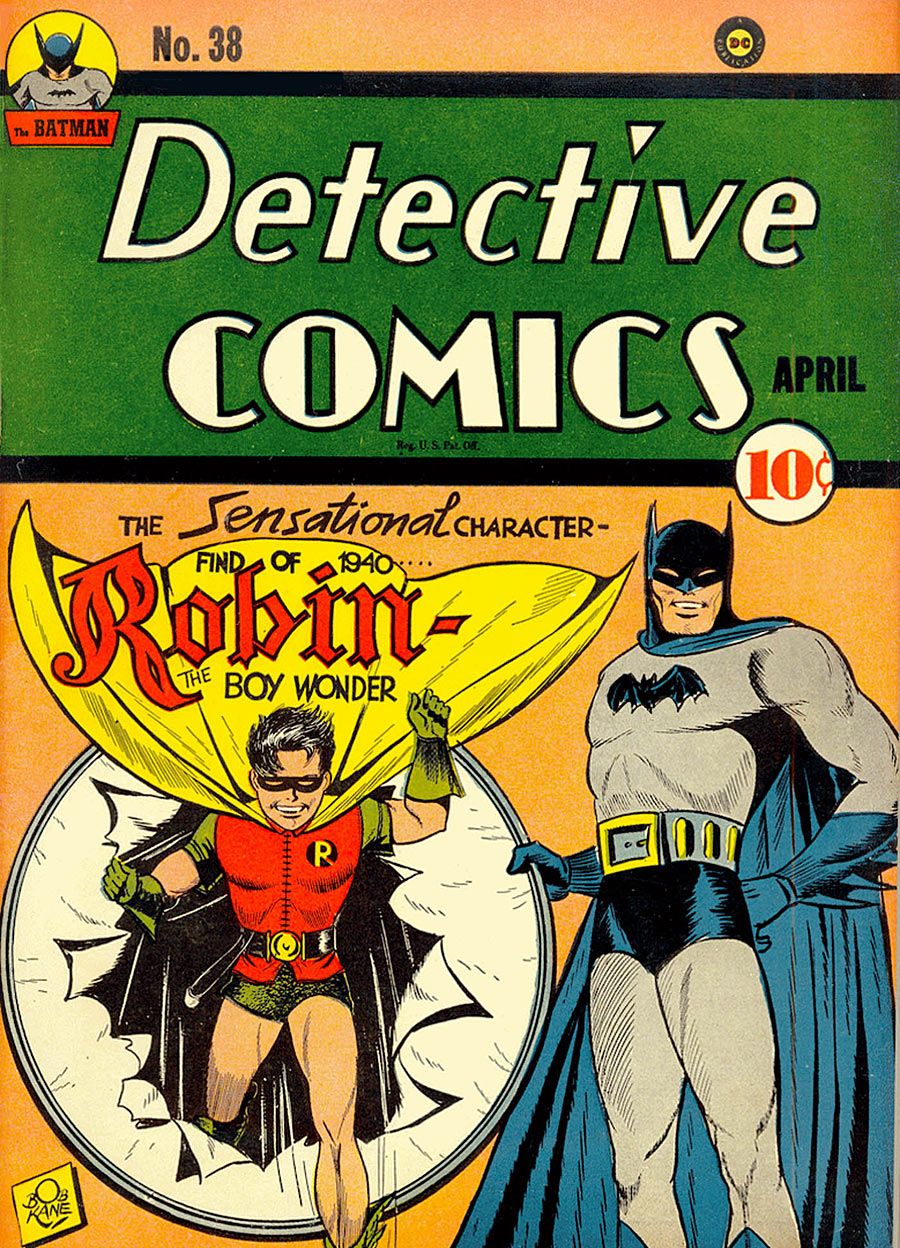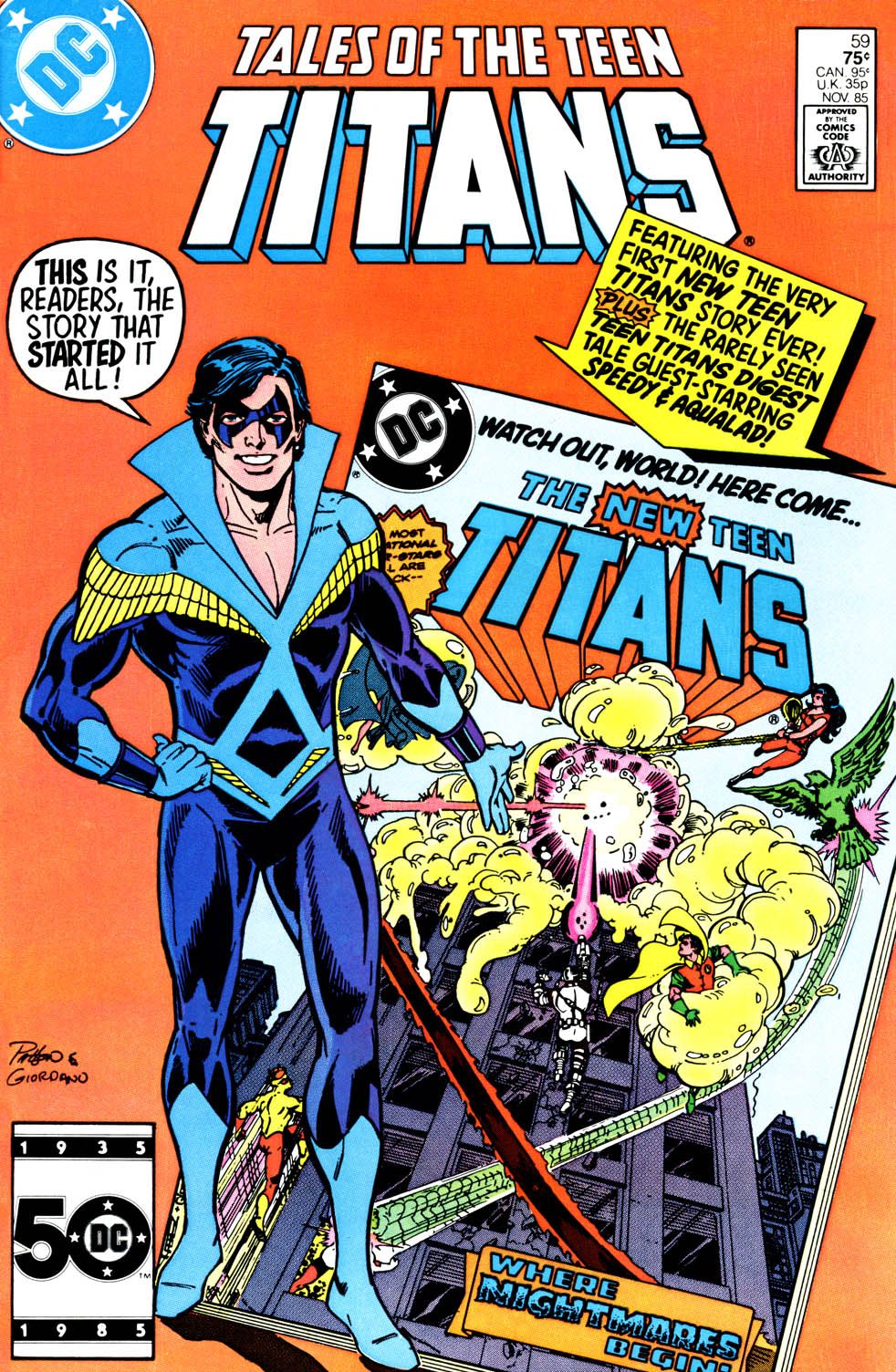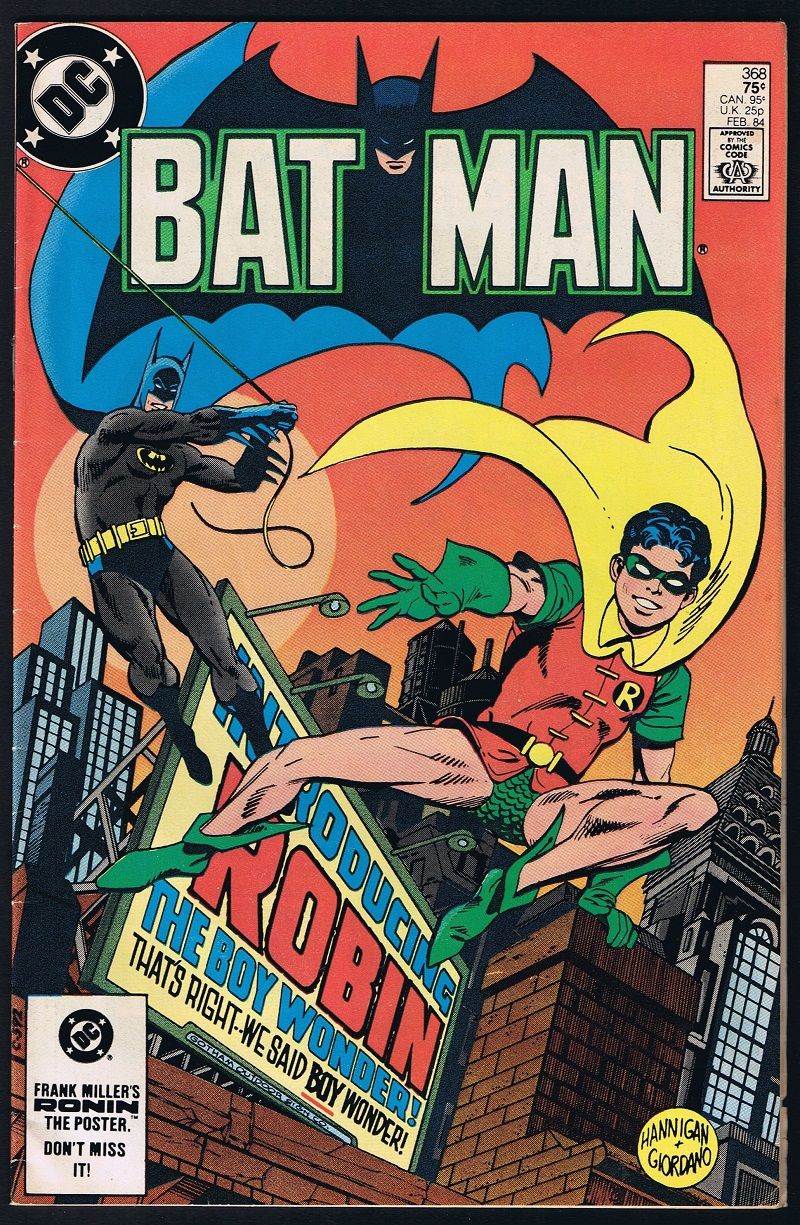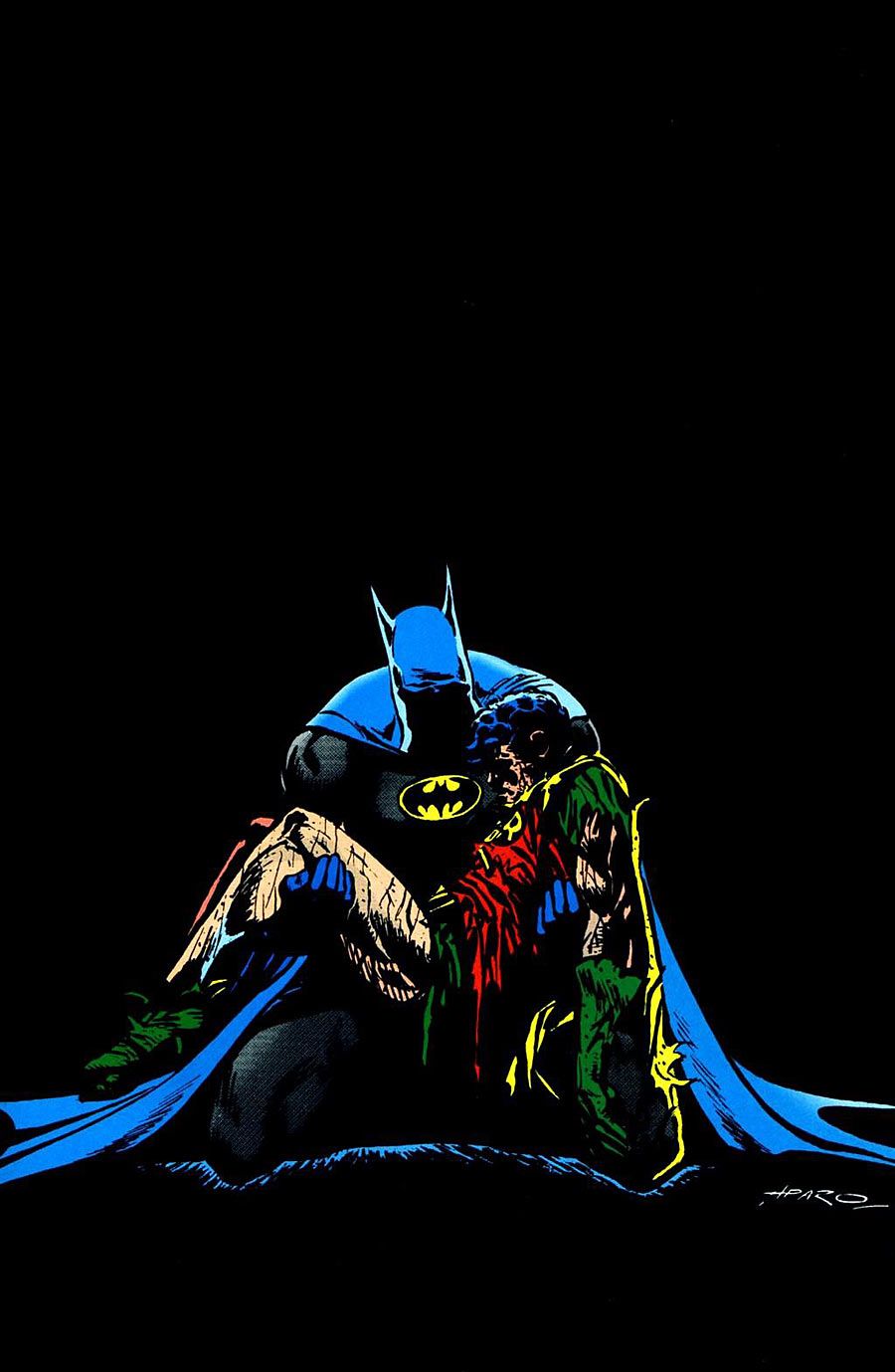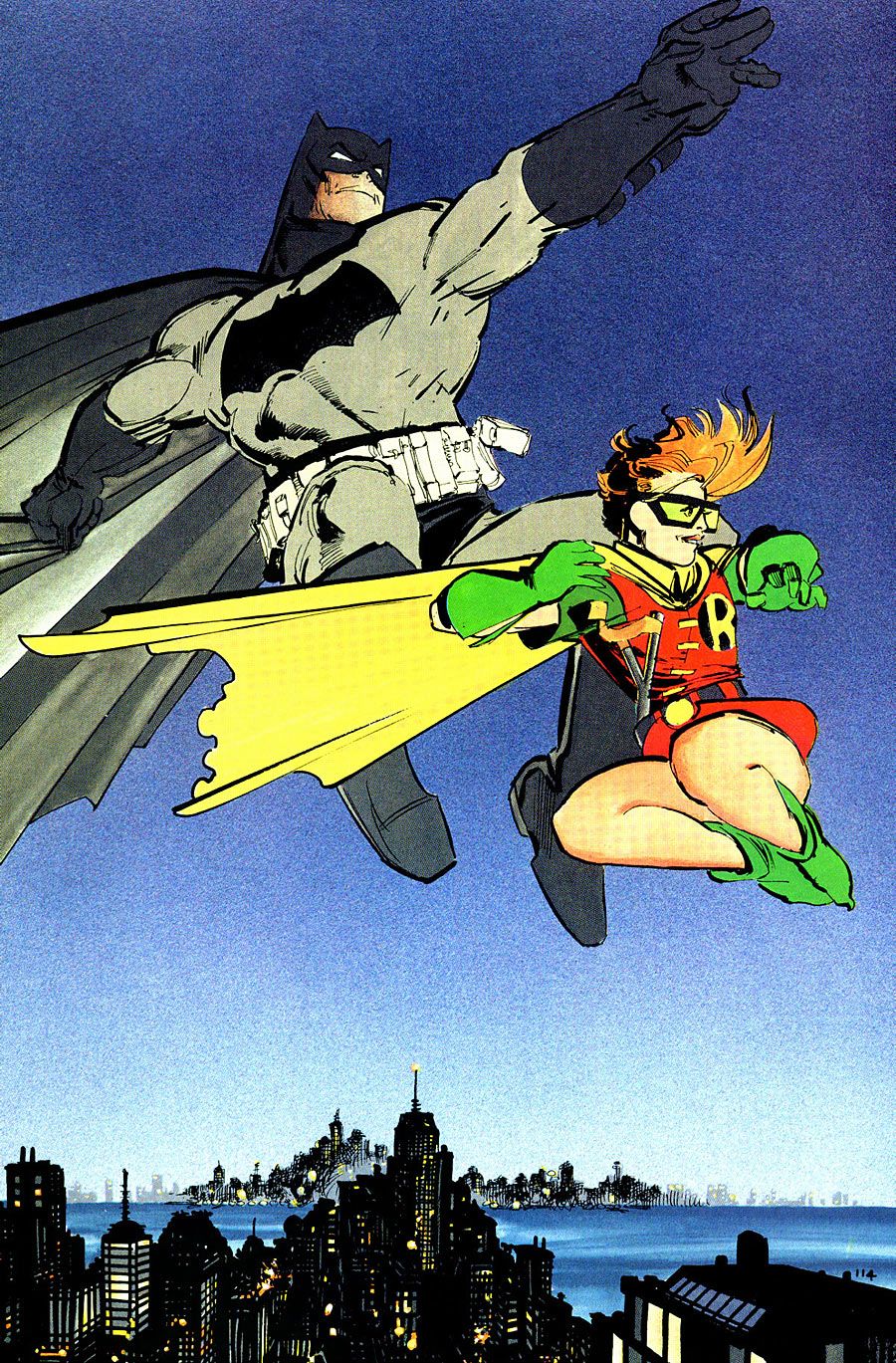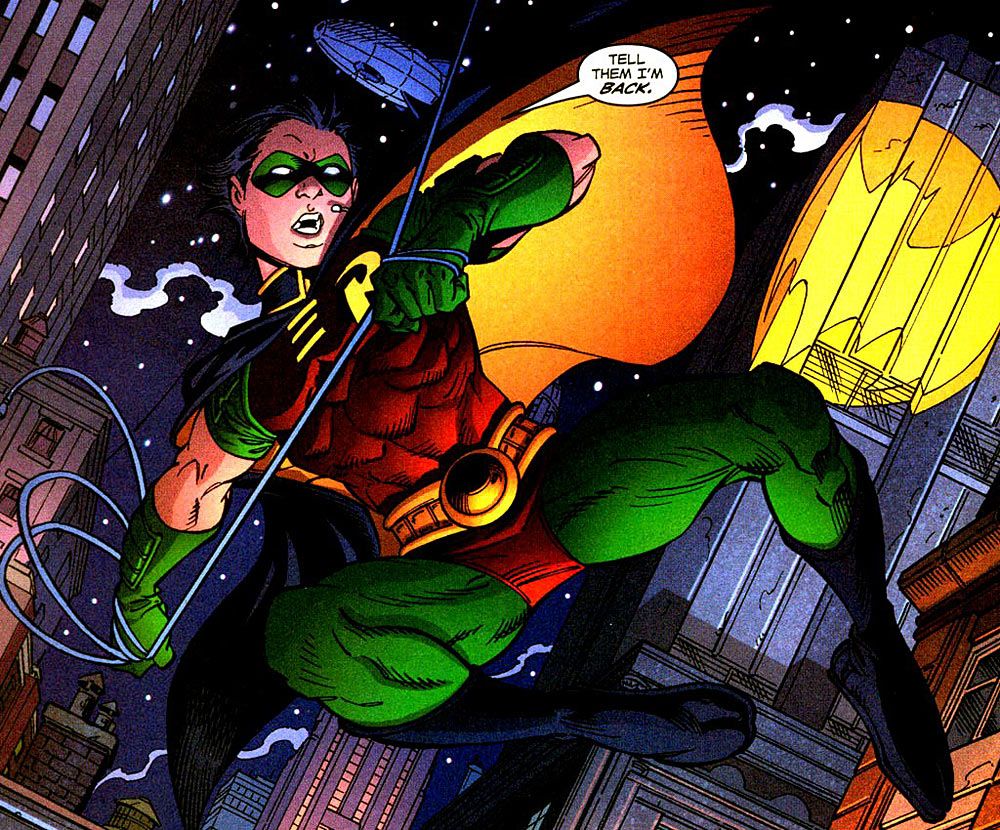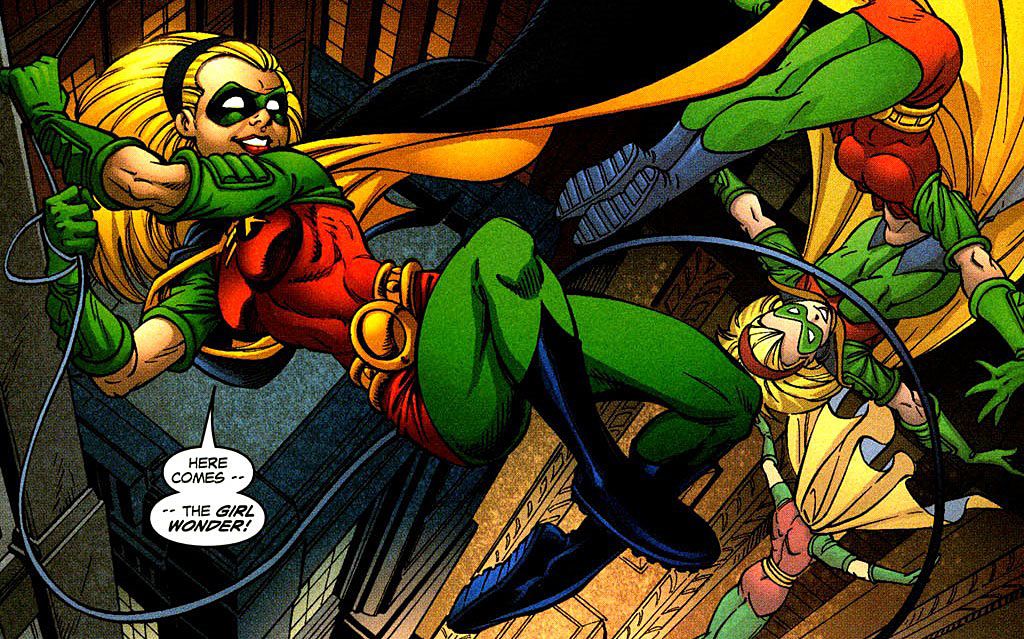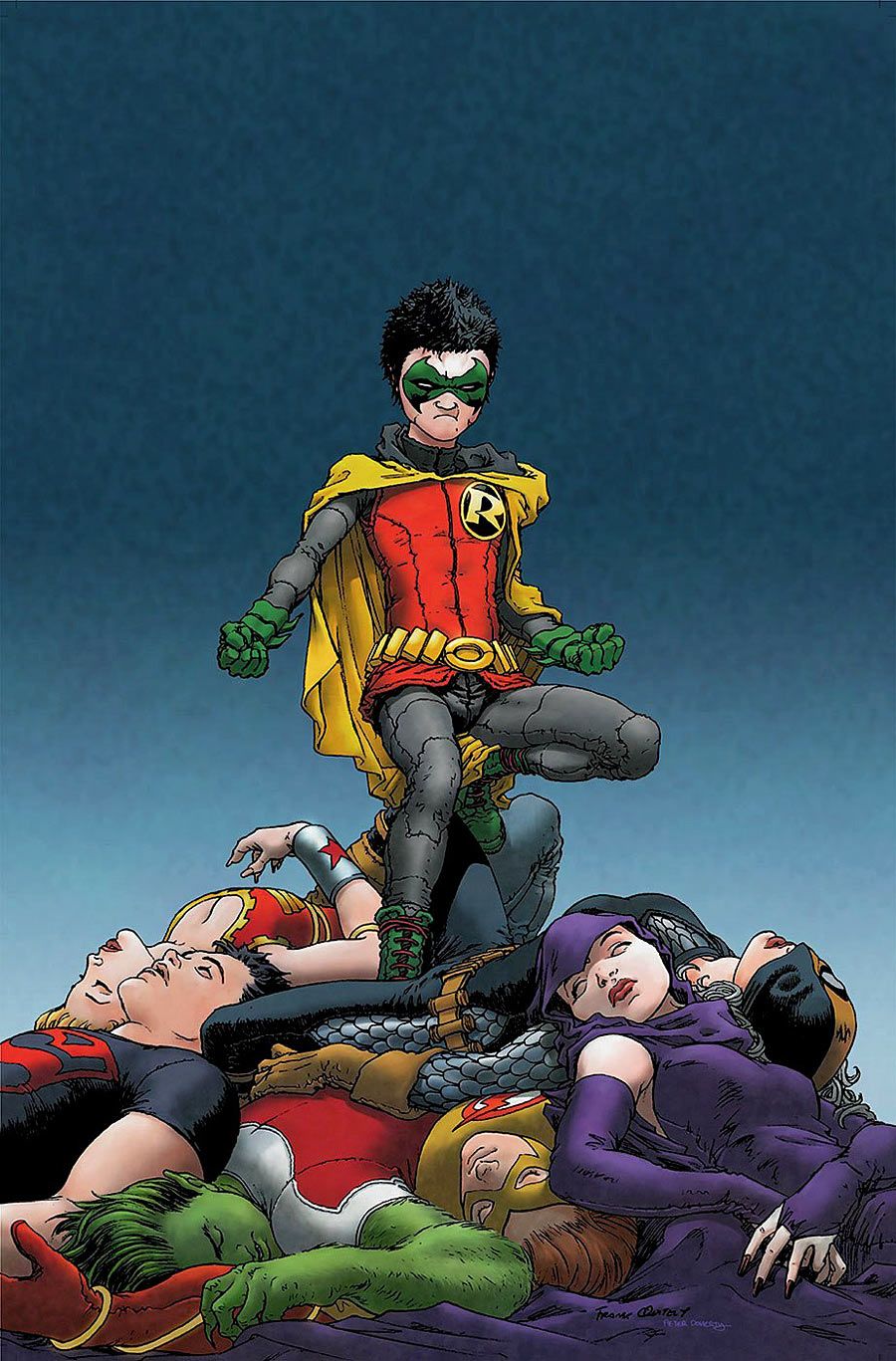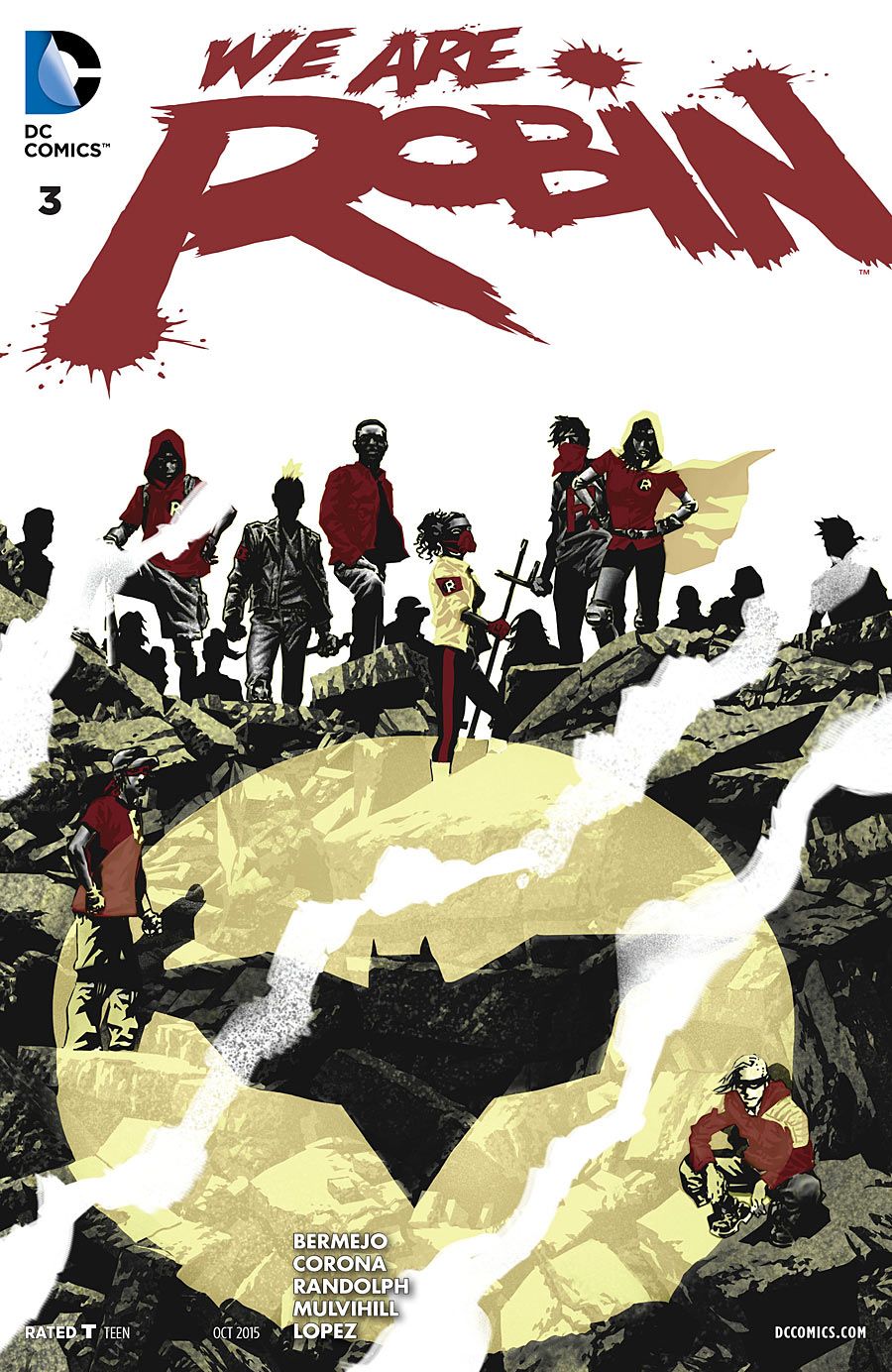Robin has been one of DC Comics' most recognizable and popular superheroes since 1940, with the identity behind the mask having changed multiple times. The hero/sidekick/partner is nearly as well known as Batman himself, and it's hard to find a hero with a more loyal fan following. Starting with Dick Grayson, the first Robin and original "Boy Wonder," DC has maintained a long lineage of domino-masked heroes who have fought side by side with Bruce Wayne, each forging a rich legacy all their own.
But now, the Robins are at war. In the pages of the "Robin War" storyline currently unfolding across DC Comics, many of the individuals that have bore the "Robin" moniker are engaged in a conflict that's billed to have major repercussions on the character's legacy. These days, there are more heroes using the name Robin than ever before, so with "Robin War" raging, here's a guide to the heroes who have proudly served as a Robin.
Dick Grayson: The Boy Wonder
First appearance as Robin: "Detective Comics" #38 (1940). Created by Bob Kane, Bill Finger, and Jerry Robinson.
The original Robin -- and to many, the greatest -- debuted in 1940, forever changing the Batman mythos. Dick Grayson was everything Batman wasn't: flippant, inexperienced and clad in primary colors. Still, Dick Grayson endured his fair share of tragedy. Like Bruce Wayne himself, Grayson was an orphan -- a former circus acrobat whose parents were murdered by a criminal gang seeking protection money. Bruce Wayne knew that Dick Grayson would yearn for vengeance, and took him on as a ward. Together, Batman and Robin became the most famous superhero pairing in comic book history, appearing in movie serials, the 1966 pop culture-smash "Batman" TV series, countless cartoons, and multiple films.
Dick Grayson: Leader, Friend and Titan
In the pages of "Batman," Dick Grayson and his brightly colored costume eventually became synonymous with the camp stylings of a bygone era. All that eventually changed -- but not in a "Batman" comic. While Dick Grayson was fighting side-by-side with Batman, he also served as leader of the Teen Titans, but because of the character's close Bat-connections, Robin never really experienced a great deal of change during the team's original series.
That all changed when writer Marv Wolfman and artist George Perez introduced the "New Teen Titans." In the pages of this new "Titans" book, Robin experienced dramatic character development, in just a few years. Robin, the former Boy Wonder, became a man before readers' eyes, giving mainstream comic fans a truly rare experience in superhero stories: real and enduring change. Grayson gave up his iconic Robin identity to become Nightwing, and his time as Robin with the Titans allowed the Robin concept and identity to become a true heroic legacy.
Jason Todd Pre-"Crisis": Everything Old is New Again
First appearance as Jason Todd: "Batman" #357 (1983); as Robin: Batman #368 (1983). Created by Gerry Conway and Don Newton.
With Dick Grayson flying solo as Nightwing, the Batman books were without the familiar youthful presence of a Robin for a time. In 1983, DC Comics introduced the second young man to wear the mantle of Batman's sidekick. The pre-"Crisis on Infinite Earths" era Jason Todd's origin was almost identical to Dick Grayson's. The second Robin's parents were also circus acrobats killed by a criminal (in Todd's case, it was Killer Croc), and, like the first, Batman took pity on the young man, bringing him under his wing as the second Robin. Todd proved fairly popular in this incarnation, and became the focal point of many "Batman" stories. Soon, though, Todd received a character makeover that proved so unpopular that fans went to truly drastic measures to remove the second Robin from the pages of DC Comics.
Jason Todd Post-"Crisis": "Death in the Family"
The aftermath of the seminal DC event "Crisis on Infinite Earths," presented an opportunity for the powers-that-be to reset continuity and rework some of their classic characters. DC decision-makers found the coincidence of a second orphaned circus acrobat too convenient, so Jason Todd received one of the more extreme character makeovers; going from the orphaned son of circus acrobat to a street-tough, Dickensian orphan. In this new DC continuity, Batman caught Todd stealing the wheels off the Batmobile, and discovered that Todd's mother died of an overdose, while his father, a former gun-for-hire employed by Two-Face, had disappeared. Seeing the boy's potential, Batman took Todd in and trained him to become Dick Grayson's replacement.
Following that change, Todd began to be portrayed as the rebel Robin -- a violent and snarky version of the beloved Boy Wonder. Fans quickly turned on the revamped young hero. The hate got so heated that DC set up a 1-900 number to see if fans really wanted this Robin dead. The vote showed that fans indeed wanted to see this new Todd six feet under, and in the classic "A Death in the Family" story arc, the Joker -- operating under the auspices of his new boss, bloodthirsty DC fans -- murdered the second Robin with a crowbar.
In later years, Jason returned as the antihero the Red Hood, but following "A Death in the Family," Batman was once again left without a Robin.
Carrie Kelley, Robin Returns
First appearance: "Batman: The Dark Knight Returns" #1 (1986). Created by Frank Miller.
In the dystopian future of Frank Miller's seminal "Dark Knight Returns," an aged Bruce Wayne was without a Robin, until a brave girl named Carrie Kelley took it upon herself to take up the heroic legacy began by Dick Grayson. There can be no question that Miller's "Dark Knight" was one of the most somber deconstructions of superheroes ever crafted, but even here, in the darkness of Miller's opus, a Robin shined a bright light of heroic joy on Gotham City. Carrie Kelley's parents were not present in her life -- they preferred doing drugs and left Kelley to fend for herself. Kelley did so, and brought hope to both a very dark future and a very broken Bruce Wayne. Kelley was an ever-smiling presence throughout Miller's saga and even though she has not had many appearances outside of Miller's world, she remains a major part of the Robin legacy.
Tim Drake, Robin: The Next Generation
First appearance as Tim Drake: "Batman" #436 (August 1989); as Robin: "Batman" #442 (1989). Created by Marv Wolfman and Pat Broderick.
With Jason Todd dead, Bruce Wayne plummeted into months of mourning and intense depression. It seemed that Batman needed a Robin to stay hopeful and grounded, and thankfully, a great one was on his way. Tim Drake was a great detective even before he donned the yellow cloak of the Boy Wonder -- having himself figured out Batman's secret identity. A very young Drake was present at the circus the day Dick Grayson's parents were murdered. Soon after, Batman appeared with a young sidekick, while Bruce Wayne adopted the orphaned circus boy. For years, Drake watched for afar, until the death of Jason Todd. An intensely violent Batman plagued Gotham City, and Drake knew that something had to be done, taking it upon himself to become Robin. At first, Batman resisted, but Drake soon proved himself to be the most capable of all of Batman's partners.
With Drake, the green shorts and booties of previous Robins were gone, with this newest Boy Wonder donning a high tech battle suit. Drake became the Robin of a new generation of comic fans, and was the first Robin to star in his own monthly series; a long-running comic that allowed the legacy of Robin to take new meaning in the modern day. Robin served with the Teen Titans, with Young Justice and eventually, like Dick Grayson, struck out on his own, as the heroic Red Robin. It was recently revealed that Drake will one day take up the mantle of Batman, when he succeeds Terry McGuiness as the second Batman Beyond. That's quite a resume.
Stephanie Brown, Queen of Controversy
First appearance as Stephanie Brown: "Detective Comics" #647 (1992); as Spoiler: "Detective Comics" #648 (1992); as Robin: "Robin" #126 (2004). Created by Chuck Dixon and Tom Lyle.
Stephanie Brown had long been a popular member of Batman's supporting cast, but during her time as Robin she became the most controversial figure ever to wear the red tunic. When Brown first appeared as a supporting character in "Robin," she made a fine addition to Tim Drake's growing cast. As the daughter of the minor Batman villain the Cluemaster, Brown had a unique perspective and became the most important woman in Robin's life. When Brown adopted the costumed identity of the Spoiler, she became another stalwart champion to fight side by side with Batman and Robin.
After Tim Drake's parents were murdered, Stephanie took up the Robin mantle . Her legacy appeared secure -- but that's when things got dicey. Batman trained Brown, but fired her when she proved a liability. When her attempt to bring down the villainous Black Mask failed, she was violently tortured by the villain, "Saw"-style, leading to her apparent death while shocking and angering Stephanie's loyal legion of fans. Brown later returned as Batgirl, becoming the bearer of the mantle of two great heroes. The former Spoiler, former Robin, former Batgirl has recently made her first New 52 appearance, so the legend of Stephanie Brown is still being built.
Damian Wayne
First appearance as a baby (unnamed): "Batman: Son of the Demon" (1987); as Damian Wayne: "Batman" #655 (2006); as Robin: "Batman and Robin" #1 (2009). Created by (original versions) Mike W. Barr and Jerry Bingham; (current version) Grant Morrison and Andy Kubert.
All the Robins have been like sons to Bruce Wayne, and he adopted Tim Drake, but in 2006 writer Grant Morrison and artist Andy Kubert introduced the world to Batman's biological son -- a master martial artist, an arrogant prodigy, and a narcissistic wunderkind -- Damian Wayne. This Robin was, in ways, darker than Batman, but with good reason -- Damian was the heir to not only the Wayne legacy, but the legacy of Ra's Al Ghul.
Damian's mother was Talia Al Ghul, and together, Bruce and Talia parented the next bearer of the Robin legacy. As a boy who has been trained to be a killer since the moment he was created, Damian stands in stark contrast to past Robins. Talia wanted to make Damian a killer, the new head of the League of Assassins, but Batman and Dick Grayson made Damian a hero. When Bruce Wayne was believed dead, Damian Wayne took up the mantle of Robin and fought side by side with the new Batman -- Dick Grayson. Together, Dick and Damian formed a very different Dynamic Duo, one in which Batman was the bright and hopeful hero and Robin was the vengeful crusader.
"We Are Robin"
Many, many DC legends were greatly reimagined with DC's New 52 reboot of continuity, but each and every Robin on this list (except Stephanie) remained a part of the Batman mythos. Sure, DC condensed the Batman continuity to a five-year period, but it seems that a great deal happened in this half a decade. In the NuDC, Dick, Jason, Tim and Damian inspired a legion of street kids to take up the red and yellow and follow their heroic as example as an army of Robins. "We Are Robin" is one of DC's most intriguing debuts of 2015, and is taking the Robin legacy to the next level. This title has made the concept of Robin into a viral idea, a concept of bravery and fairness, and an organic extension of the legend that began with the introduction of Dick Grayson in 1940.

